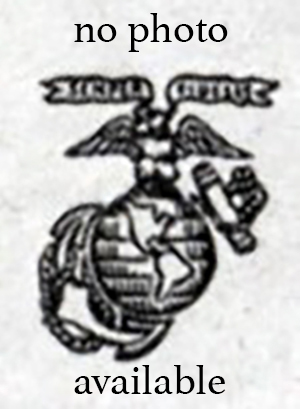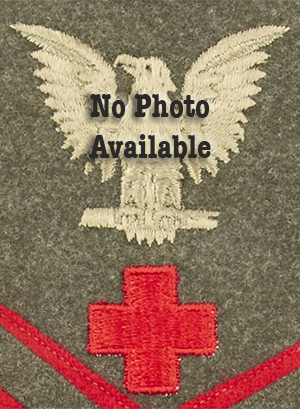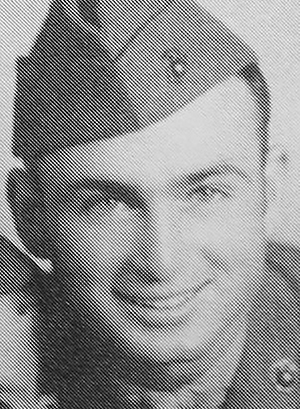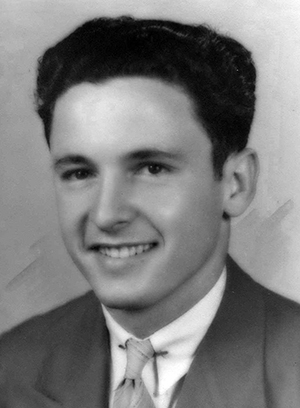1943: "D-2-18"
This cemetery came into existence on 24 November 1943, as Marine combat units were preparing to leave the island of Betio. It was established just a few feet inland from Red Beach One, where the Third Battalion, 2nd Marines was slaughtered during the initial landings. Scores of bodies dotted the sand and lined the surf; between the drowned tanks and smashed tractors, bunkers and pillboxes smouldered for days. Red One was one of the great hellscapes of the Pacific War.
The burial ground was known as “D-2-18 Cemetery” because all of the men buried therein belonged to the same company of the 18th Marines. They were a contingent of combat engineers led by Captain Richard W. Vincent and assigned to K/3/2nd Marines for the assault landing. And, on 20 November 1943, they were mowed down to a man as they set foot on the beach. Among them were Charlie Montague and Gene Seng, hometown friends who grew up, enlisted, served, and died together.
While Marines who died in the same area on Tarawa were commonly buried together for the sake of convenience, it is unusual for a single unit to be so segregated – and this is because members of D/2/18 buried their friends personally. Corporal William W. Bennett remembered the aftermath of the battle, and related his experiences to author Brent Peterson in the book Once Upon A Lifetime.
[2Lt. Arthur K.] Simonson asked if they had seen Lieutenant Vincent and his men that went ashore with K/3/2. [Cpl. Emory B.] Ashurst and [Cpl. Joseph F.] Sobolewski went silent and Ashurst rubbed his face and they started to sob. “They’re all dead,” Sobolewski mumbled. Fred [Cpl. Fred R. Ellis] asked, “What do you mean, ‘all’? Seng, Montague, Roads?” Sobolewski nodded his head affirmatively. “We found them on Red 1 this morning on the way over. They are all lying right where they died. They never even got off the beach the first day.” Fred said, “We sure as hell can’t just leave them lying there; we’ve got to give those boys a proper burial.”
Bennett’s account continues:
[Bennett] and Fred walked directly to a pile of five Marines slumped over a .30-caliber machine gun. They were all facing up a slope in that rose three feet to a somewhat level beach. Their boots were only 10 feet from the water. Bill grabbed the shoulders of the Marine who was directly behind the gun and rolled him on his side. It was Charlie Montague…. They rolled over the next body and it was Gene Seng.
Up the small slope and about 50 feet from the water’s edge they measured out a 60 foot by 10 foot rectangle, paced out a grave every five feet, and began digging graves…. Looking through the equipment strewn about, they located rain ponchos and began to lay out the bodies for burial. They decided that Lieutenant Vincent should be buried in the first grave to the east, as he was their leader…. Some of their bodies had to be bent back into a suitable shape for burial and at best, they only slightly resembled the living Marines that their friends remembered.
Among the onlookers was correspondent Robert Sherrod, who jotted a few lines in his notebook before continuing up the beach. His description of the D-2-18 cemetery reached the American reading public in his bestselling book “Tarawa: The Story Of A Battle.”
A half-dozen Marines, members of the engineer regiment, are walking around the beach, examining the bodies. “Here’s Larson,” says one. “Here’s Montague,” says another. The bodies, as they are identified, are tenderly gathered up and taken fifteen or twenty yards inland where other Marines are digging graves for them.
This is unusual, because most of the Marines are being gathered by burial parties, which have not progressed this far. But these men are looking for dead from their own particular company. Since they are leaving by transport in a few hours, I suppose they think “Here is the last thing we can do for these boys we have known so long. We’ll do it with our own hands.”
When I passed that way again several hours later, the Eighteenth Marines had gone, had sailed away. But I noticed the fifteen graves this particular company had dug. A rude cross had been erected over each grave – undoubtedly replaced later by a neat white cross – and on the cross had been written the name of the Marine who lay underneath it, the designation that he was a Marine, and the date of his death, thus:
USMC
20-11-43
In front of the fifteen graves, so that all would know which outfit they came from, and that they all came from D Company of the Eighteenth, the Marines had proudly erected a larger cross:

Robert Sherrod
Tarawa: The Story Of A Battle
D-2-18 Burials as reported by Marine Corps Graves Registration
Source: Report of Gilbert Island Campaign Deceased, 2MarDiv, 26 January 1944.
1

Capt. Richard Woytisek Vincent
D/2/18th Marines
Killed in action 11/20/1943
Recovered from Cemetery 33
Accounted for 10/21/2014
Vincent
2

Pvt. Wayne Alfred Larson
D/2/18th Marines
Killed in action 11/20/1943
Identified by 604th QMGRC
Accounted for 5/10/1946
Larson
3

PFC Arnold Richard Millick
D/2/18th Marines
Killed in action 11/20/1943
Identified by 604th QMGRC
Accounted for 4/18/1946
Millick
4

Pvt. Addison Blanchard Roads
D/2/18th Marines
Killed in action 11/20/1943
Identified by 604th QMGRC
Accounted for 4/18/1946
Roads
5

Pvt. James Scott Castle, Jr.
D/2/18th Marines
Killed in action 11/20/1943
Identified by 604th QMGRC
Accounted for 4/18/1946
Castle
6

Cpl. Hazen Burdette Lanning, Jr.
D/2/18th Marines
Killed in action 11/20/1943
Identified by 604th QMGRC
Accounted for 4/23/1946
Lanning
7

HA1c Henry Ford Watkins
D/2/18th Marines
Killed in action 11/20/1943
Identified by 604th QMGRC
Accounted for 5/10/1946
Watkins
8

Pvt. Merlin Wilbur Waltz
D/2/18th Marines
Killed in action 11/20/1943
Identified by 604th QMGRC
Accounted for 5/1/1946
Waltz
9

PFC Samuel Roy Parsons
D/2/18th Marines
Killed in action 11/20/1943
Identified by 604th QMGRC
Accounted for 4/18/1946
Parsons
10

PFC Charles Montague
D/2/18th Marines
Killed in action 11/20/1943
Identified by 604th QMGRC
Accounted for 5/10/1946
Montague
11

PFC Russell Lloyd Jarrett
D/2/18th Marines
Killed in action 11/20/1943
Identified by 604th QMGRC
Accounted for 4/18/1946
Jarrett
12

Pvt. Max Junior Lyntton
D/2/18th Marines
Killed in action 11/20/1943
Identified by 604th QMGRC
Accounted for 4/23/1946
Lyntton
13

PFC Gene Gustav Seng, Jr.
D/2/18th Marines
Killed in action 11/20/1943
Identified by 604th QMGRC
Accounted for 4/23/1946
Seng
14

PFC Ralph Clement Kountzman
D/2/18th Marines
Killed in action 11/20/1943
Identified by 604th QMGRC
Accounted for 4/18/1946
Kountzman
15

Pvt. Robert Coleman McKinney
D/2/18th Marines
Killed in action 11/20/1943
Identified by 604th QMGRC
Accounted for 4/18/1946
McKinney
[vacant]

Beautification: Monument Cemetery 20

The Navy “beautification” project of 1944 required the removal and disposal of the original markers. In their place, a large cross was placed on a concrete pedestal, surrounded by a border of palm logs and chain fencing. This reconstructed monument was called “Cemetery 20,” and it was a familiar sight to the air crews who flew from Hawkins Field. Many of them lived in the tents surrounding the area and a number of important buildings, including a radio station, stood nearby.
As with the other “Monument” cemeteries, Cemetery 20 included a large tablet, hand-painted in gold leaf, bearing the names of the men originally buried in the area. Here arises an interesting conundrum, for while the Marine Corps reported fifteen burials, the tablet includes fifteen names – “and one unknown” for a total of sixteen.
The two main accounts of the original D-2-18 Cemetery – Corporal Bill Bennett and Robert Sherrod – are very specific in counting fifteen graves. Indeed, Sherrod took pains to include the names of all fifteen graves he observed, starting with McKinney (Grave 15) and ending with Vincent (Grave 1). Marine Corps Graves Registration concurred, listing fifteen individuals and no unknowns in their January 1944 report of burials.
Number 16 was thought to be Private Edward Dale Coble, another member of D/2/18 who lost his life on Beach Red One. His battalion muster roll provides a bit of supporting evidence:

Given the care shown by Bennett and crew in identifying and burying personal friends, it seems unlikely that Coble would have been ignored, or that Sherrod would have left his name out of the book. This raises a few theories. In “Tarawa’s Gravediggers,” author William Niven speculates that Coble’s marker went up after the 18th Marines departed – this certainly seems to be plausible. However, it is not clear whether Coble’s body was actually buried below the marker. Believing so would assume that Coble’s body, when found by strangers, was not only identified but also brought specifically to this location. Given the elapsed time and the advancement of decomposition, it seems likely that any last bodies were buried near where they fell (for example, the “isolated graves” that dotted western Betio). If Coble did have a marker here, it may have been in name only.
In preparing this study, this researcher offers another possibility. Photographs of the D-2-18 Cemetery taken in January 1944 show the original crosses to be considerably weathered with no legible names. (Bill Bennett recalled writing names in grease pencil.) It is plausible that the marker which once denoted “D-2-18” was mistaken for an additional grave, once the original pencil weathered away. As seen in photographs at right and above, the “D-2-18” signpost looked just like a grave marker; the only way we know it was a signpost at all is through Sherrod’s reporting. From the garrison troops’ perspective, the site must have looked like a row of fifteen graves plus one additional set slightly forward – hence, sixteen with one name unknown.

Marine Graves Registration records indicate that Coble was buried in Cemetery A.
Reconstructing the plot map of the 1946 Lone Palm Cemetery does show that Coble (as Betio X-252) was buried alongside others known to originate from Cemetery A.
His remains were identified by the Central Identification Laboratory, Hawaii, on 27 January 1947.
Missing Men: Other Monuments
The 18th Marines were not the only wartime losses commemorated at Monument Cemetery 20. Life at Hawkins Field could still be dangerous, even after the Japanese bombing raids ended. Flight crews, in particular, took regular risks every time they boarded a plane; crashes on the ground or in the air were a fact of life for Army, Navy, and Marine aviators.
Minutes before midnight on 13 February 1944, VP-144 ordered two bombers aloft to strike Japanese shipping spotted at Jaluit Atoll in the Marshall Islands. The planes, both PV-1 Ventura patrol bombers, departed Hawkins Field at 2355. A flash of orange flame lit the night sky and an explosion echoed across the water. Ventura #33361 failed to return to base; a search of the area came up empty of wreckage or survivors. Although all hands realized that the bomber went down at sea ten miles from the field, “no witnesses could be found who had actually seen the plane crash in the water,” and the crew of six were officially reported as “missing in action” as of 14 February 1944. Memorial services were held on 22 February, and the entire squadron turned out to see a memorial marker placed near the beach.

John William Baker | Unaccounted For
Lieutenant
VPB-144
“Bill” Baker, the pilot of PV-1 #33361, graduated from USC in 1940 and earned his wings at Pensacola.
Baker

Thomas Edward Long, Jr. | Unaccounted For
Ensign
VPB-144
Ensign Long was the co-pilot of PV-1 #33361. He was an agriculture student at Texas Tech before entering the service, and earned his wings at Corpus Christi in 1943.
Long

Michael Francis Mahoney | Unaccounted For
Aviation Chief Machinist’s Mate
VPB-144
Chief Mahoney, a native of Camden, New Jersey, was a graduate of Camden Catholic High School. He joined the service before the war, and was a veteran of Pearl Harbor and Midway.
Cenotaph
Mahoney

Lester Goodwin Tate | Unaccounted For
Aviation Machinist’s Mate 3c
VPB-144
Lester Tate, a native of Richmond, Virginia, was a graduate of John Marshall High School. He joined the Navy in 1942.
Tate

Delbert Veral Freeman | Unaccounted For
Aviation Ordnanceman 2c
VPB-144
Freeman

Charles Anthony Sartalamachia | Unaccounted For
Aviation Radioman 3c
VPB-144
Sartalamachia

Recovery Operations: 1946

The 604th Quartermaster Graves Registration Company began operations at “Grave In Front Of British Wireless Station” – Cemetery 20 – on 16 April 1946. Thanks to their previous experience in Cemetery 10, Cemetery 11, and Cemetery 13, the exhumation team did not waste time looking for trenches around the area but instead ripped up the monument itself. As in the other Monument cemeteries, the bodies were found beneath the cross.
Cemetery 20 was one of the most straightforward operations of the entire 604th mission. In two days of digging, the team found fourteen of the sixteen remains they sought – and, in a feat not to be repeated, they identified all fourteen. After a thorough search for the last two (the “Unknown” and Captain Vincent), the grave was declared closed.
Diary Excerpts, 604th Quartermaster Graves Registration Company
"The Grave near the Brit. Wireless stat. was started. In the afternoon rain delayed the work for a short time. Eleven bodies were disinterred today but there was no Comital [sic] service."
"There were meant to be 16 bodies by the British wireless station, but only 14 could be found, so today it was officially closed. We were told that tomorrow being Good Friday we would only work in the morning."
Recent Activity
Identifications
The remains of Captain Richard W. Vincent, originally buried in Grave 1, were located by History Flight in 2013 – at the site of Cemetery 33.
It is theorized that Vincent’s original wartime grave was disturbed by construction sometime in 1944, and the body exposed. He was exhumed, placed in a purpose-built wooden coffin – traces of which were found with his remains – and reburied by the Navy garrison in Cemetery 33 as an unknown. The new grave was not aligned with the original burial rows, and was thus overlooked by the 604th Quartermaster Graves Registration Company.
With Captain Vincent’s identification in 2014, all remains from Cemetery 20 have been accounted for.




